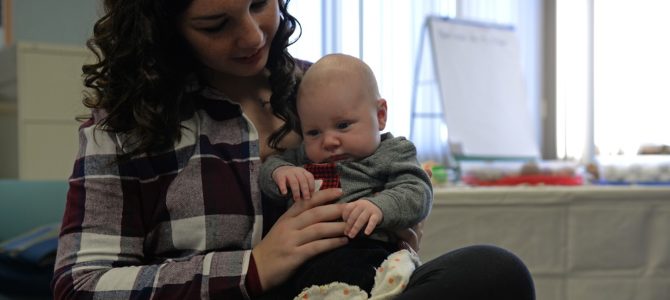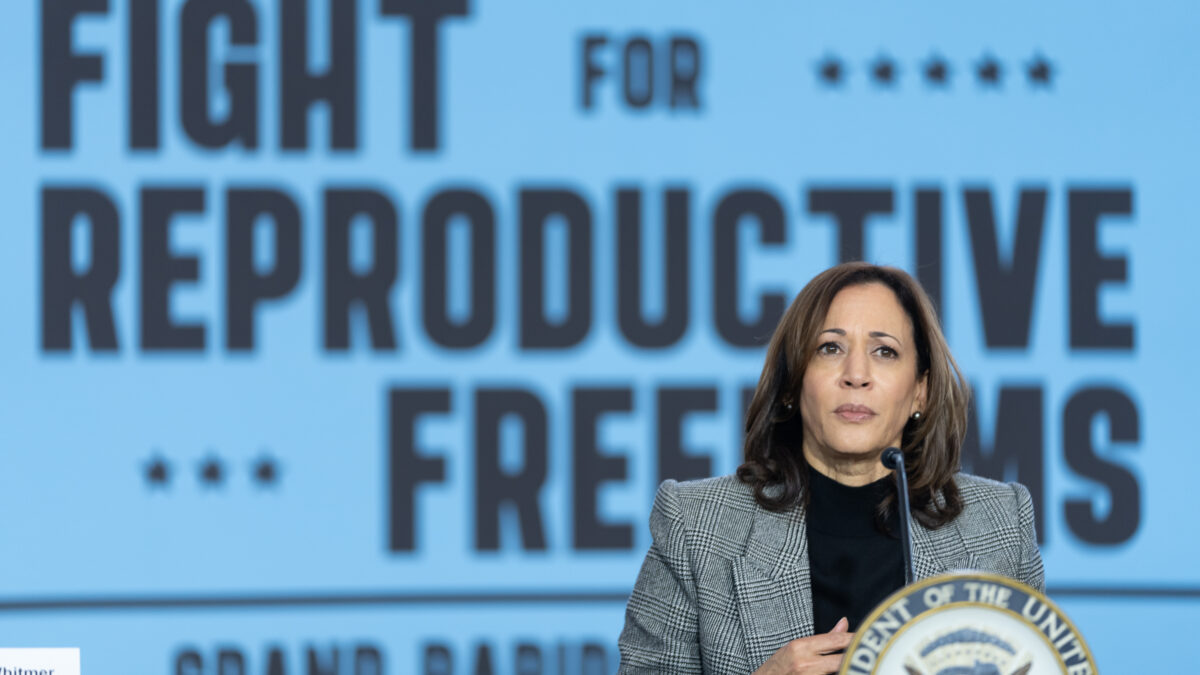
An article in National Review earlier this year titled “The Best Metrics of Pro-Life Progress” rightly notes that abortion numbers are falling, which is encouraging for all of us who want to see the end of legal abortion in America. Before we celebrate, however, we should perhaps reconsider the best metric of success.
If you measure the rates of abortion for every 1,000 women aged 14 to 44, as the article author does, the numbers drop significantly—more than 50 percent fewer in 2014 than in 1980. The problem with this, however, is that it does not take into account declining fertility in America. Raw birth numbers have been dropping for decades, so one would expect abortion rates to fall as well.[1]
It’s more helpful, from a pro-life point of view, to know what proportion of all pregnant women choose abortion from year to year (excluding those who miscarry). If the ratios of abortions to live births go down, we know that more women are not seeking abortions, and we can look for possible reasons.
Fewer Pregnant U.S. Women Are Having Abortions
And go down those ratios have. From the peak of 36.4 in 1984 they have fallen steadily to 18.8 in 2015, a drop of 48 percent (Centers for Disease Control (CDC) data). The decline is profound and continuous. This rules out some explanations from the start.
In the National Review article, Michael New dispatches Planned Parenthood’s claim that increased use of contraception, and the right kind of contraception, is largely responsible for fewer unintended pregnancies, and thus for the decline in abortion numbers: rates of unintended pregnancy over the years don’t back it up. His claim that abortion numbers have fallen because of protective laws or changed hearts and minds needs a closer examination, however.
Academic research, he says, “shows that a variety of pro-life laws, including public-funding limits, parental-involvement laws, and properly designed informed-consent laws all reduce the incidence of abortion.” The question is, How much?
When we tally the reduction in abortion ratios one would expect to see for these measures (which he has documented in his research), we get a total reduction in abortion ratios of 4.7 per 100 live births.[2] The total reduction in abortion ratios from 1984 to 2015 was 17.6, however.
And this comparison assumes these laws were all passed at some point in all of the CDC’s reporting states, which is not the case. These laws save lives, and would save more lives if they were passed everywhere, but they are not driving the continuous, steady drop in abortion ratios.
The Supposed ‘Pro-Life Generation’
His second reason for the decline—changed hearts and minds—is intriguing, because it must be true in some sense, as women decide whether to abort or carry to term. If there is such a change, however, it is not reflected in public opinion polls. For years now, many have heralded polls ostensibly showing that the younger generation is more pro-life, or that more people consider themselves “pro-life.”
Researchers from the American Enterprise Institute, however, conduct an annual survey of previous polls on abortion, and still report that there has been no significant shift in public opinion since the early 1970s. About 20 to 30 percent of the population are pro-choice, the same proportion are pro-life, and about half are in the middle.
In May 2016, 29 percent of respondents to a Gallup poll said abortion should be legal in all circumstances, 50 percent said it should be legal in some circumstances, and 19 percent thought it should be illegal in all circumstances. “Substantial numbers of people tell the pollsters that abortion is an act of murder. They also say that the decision to have an abortion should be a personal choice,” says the AEI report. (People may want to think of themselves as “pro-life,” but we can believe that there has been a true shift when a majority say that abortionists should go to jail.)
Perhaps, however, women who find themselves pregnant, and didn’t intend to be, are changing how they think of abortion and childbirth. There is ongoing discussion about “intention” among the technocrats who push “family planning” to women at risk of unintended pregnancy. They are challenged by the discovery that not all women plan these things or want to plan them.
A woman who is taking some precautions not to become pregnant can actually be happy to find out that she is, especially if she is supported by her partner or those around her. (Those who focus on intention and planning seek to translate a woman’s imagined unhappiness with a future, possible pregnancy into a plan for her fertility, that is, to make her over in their own image.) It may be that we are seeing the effects of fairly large-scale, social-psychological changes relating to pregnancy, abortion, and childbirth that we simply cannot discern.
But Consider Pregnancy Help’s Effects
In any case, New lists last “taking care of the material needs of pregnant women.” Here he is on to something. In fact, the number of new pregnancy help centers has grown continuously while abortion ratios declined.
Heartbeat International, one umbrella organization for such centers, counted 23 new centers opening in 1973; by 2017 over 1,720 new centers had opened. (This is a partial count, as there are currently more than 2,750 such centers. Some offer emotional, moral, spiritual, and practical help, some also provide limited obstetrical ultrasounds, and a smaller number are maternity homes.) The biggest one-year increase in centers Heartbeat recorded was in 1985, the year after abortion ratios reached their peak, according to the CDC.

In a 1992 book, “Abortion Rites: A Social History of Abortion in America,” Marvin Olasky suggested that abortion rates, which were almost double ours today, declined in America in the late 19th century and early 20th century largely because of Christian philanthropy, especially maternity homes. It is quite likely that we are seeing the same thing today with pregnancy help centers.
The key role of the centers has been confirmed in Pittsburgh, where non-profit Vision for Life has been running modest ad campaigns for local centers since late 2010. Abortion ratios from 2000 to 2010 averaged 326 per 1,000 live births in Allegheny County. From 2011 to 2017, the last year for which we have the numbers, the average was 262, a 20 percent decrease.
Of course, abortion ratios are falling everywhere. The difference, however, for all other Pennsylvania counties between the two periods was only 7 percent.
The effect of advertising is not surprising: a Charlotte Lozier Institute study in 2014 found that 54 percent of women either did not know if there were a center in their community, or thought that there wasn’t one. When women know about the centers, more of them choose not to abort.
We can’t prove (yet) that pregnancy help is the main thing driving the drop in abortion numbers in the United States, but it is certainly a chief candidate for study. One thing we can assume: increased advertising for local centers will bring those declining numbers down further.
Footnotes
[1] So, for example, the Centers for Disease Control reports that the number of pregnancies dropped about 12 percent from 1990 to 2009. (In 1990 the rate was 115.8 per thousand women of child-bearing age; by 2009 it had fallen to 102.1.) The abortion rate in 1990 was 24 per 1,000 women, and in 2009 it was 15.1, a drop of 37 percent. When we look at the ratios of abortions to thousand live births, however, we get a slightly smaller, but still impressive reduction of 34 percent (from 345 in 1990 to 227 in 2009).
[2] Charlotte Lozier Institute, May 23, 2018, accessed June 12, 2018; Medicaid funding restrictions reduce the abortion ratio “Analyzing the Effect of Anti-Abortion U.S. State Legislation in the Post-Casey Era,” State Politics and Policy Quarterly, 2011, 11(1), p. 37, accessed June 12, 2018; “Using Natural Experiments to Analyze the Impact of State Legislation on the Incidence of Abortion,” Catholic Social Science Review, 2009, 14: pp. 339–362; accessed June 12, 2018.









